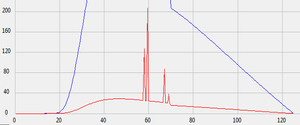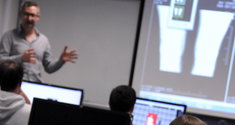

Virtual Radiography TM - Current Products
The virtual radiography TM brand encompasses four separate computer simulations, TomoVR TM, ProjectionVR TM, LectureVR TM and TechnicVR TM. Each has been developed in close collaboration with radiography educators to answer the perceived needs of students and tutors.
TomoVR TM
Students learning CT concepts crave their own 'hands on' experience. Experience and confidence positioning patients and driving the complex CT operator's console. Now they can take their first steps in an environment where they are comfortable and supported, using the world's most advanced educational CT simulation. Developed on our world leading platform and by our time served professional development team.
ProjectionVR TM
Student radiographers consistently report the need to put into practice and rehearse procedures. Also, tutors would like a cost and time effective method of either demonstrating these procedures to students, or supervising them while they practice. ProjectionVR TM provides a solution, available on a laptop, which provides a complete virtual x-ray room within the computer. Rather than the costly scheduling of a class in a real room on campus, the student can have tutor led practice in a computer lab or self-study at home.
TechnicVR TM
Some of the physics concepts introduced to students are abstract and beyond their previous experience. Tutors are often uncomfortable with questions relating to these abstract concepts and have a specific specialist knowledge rather than a deep general grounding. At the same time, campaigns such as image gently ® and IMAGE WISELY ® are driving more and more students and tutors to expand their working knowledge of patient dose reduction. TechnicVR TM incorporates SCHALL the very best computer model of heat and x-ray production available (the use of similar data in other models form the basis for professional dose estimates used by medical physicists across the world). It aims to make the abstract concept of the x-ray beam concrete and visible, using animated interactive graphical output. It also calculates real dositometric quantities. One other useful feature is the ability to convert from one unit of dose measurement to another - something students and tutors find essential.
LectureVR TM
Diagnostic radiography education relies on images in large part. Students are required to develop a mental model of the 'perfect radiograph'. Tutors can teach some general rules, but there are a myriad of specifics relevant to each anatomical area. Students need to see many different radiographs demonstrating multiple different errors to ensure they can correctly critique their own practice. Atlases of 'perfect' examples exist but due to size constraints and the non-availability of many images, radiographs of differing body habitus, or those showing various errors are not easily available. LectureVR TM overcomes these shortcomings by providing the tutor with an animated and interactive method of presenting model radiographs to students while teaching image critique. The virtual radiography TM technology embedded within it allows the tutor to alter the presented radiograph in such a way as to demonstrate the boundary between acceptable and unacceptable, e.g. in terms of rotation or distortion. LectureVR TM is a nearly inexhaustible resource of copyright free images for the generation of content for PowerPoint's, workbooks and VLE resources.
Underpinning Technology
Considerable research and development work has been required to deliver products to market over ten years. Our commercial offering is underpinned by innovative virtual radiography TM technology for which we hold significant intellectual property:
SCHALL - Before developing our own technology, we surveyed many of the current best methods to model x-ray production. Our method is a deterministic process based on previously published data in the public domain. These have been combined in a unique model capable of simulating both x-ray production and heat generation from the electrical energy applied to the x-ray tube. Anode cooling is also modelled in real time.
SANTEDB - The radiographic projection database is used in ProjectionVR TM. It is a proprietary structure of relationships and tables that hold data items. Its subject is routine radiographic exams, the descriptions of which are held in a virtual radiography ontology (SANTE), that enables communication with DICOM modalities and offers a firm foundation for delivering context sensitive learning resources and applying metadata to objects that will then be possible to retrieve via speculative searches.
KNOX - Our anthropomorphic patient models are based on data arrays obtained from cadavers. These are bespoke, acquired in various postures, with radiographic positioning requirements in mind. They are highly detailed, acquired using the latest multi-detector computed tomography equipment using a custom protocol; They also include calibration densities, which is a requirement for tissue typing and accurate dositometric calculations. A variety of proxy geometries have also been created (avatars).
ATTENUATE - This synthetic x-ray transport algorithm technology produces geometrically accurate radiographic appearances. Not only is it fast and capable of running on a wide range of computer hardware, but it has a clearly defined API, which allows other systems to call it independently, fostering interoperability.
REACH - The overall appearance and behaviour used in TechnicVR TM and ProjectionVR TM was not a simple choice. It plays a significant part in fostering learning. It has therefore been developed from years of specific task analysis studies to provide the best possible user experience for students and tutors engaged with radiography simulation. REACH has been designed to provide high levels of interaction, intuitive and realistic mapping of control and feedback, and lightning fast speed. This is important as the user learning curve must be helpful to the learning of the radiographic task, not a hindrance. The user interface guidance, look and feel are copyrighted.